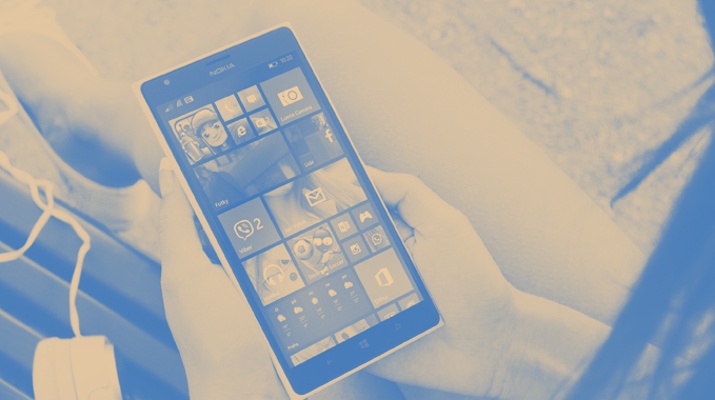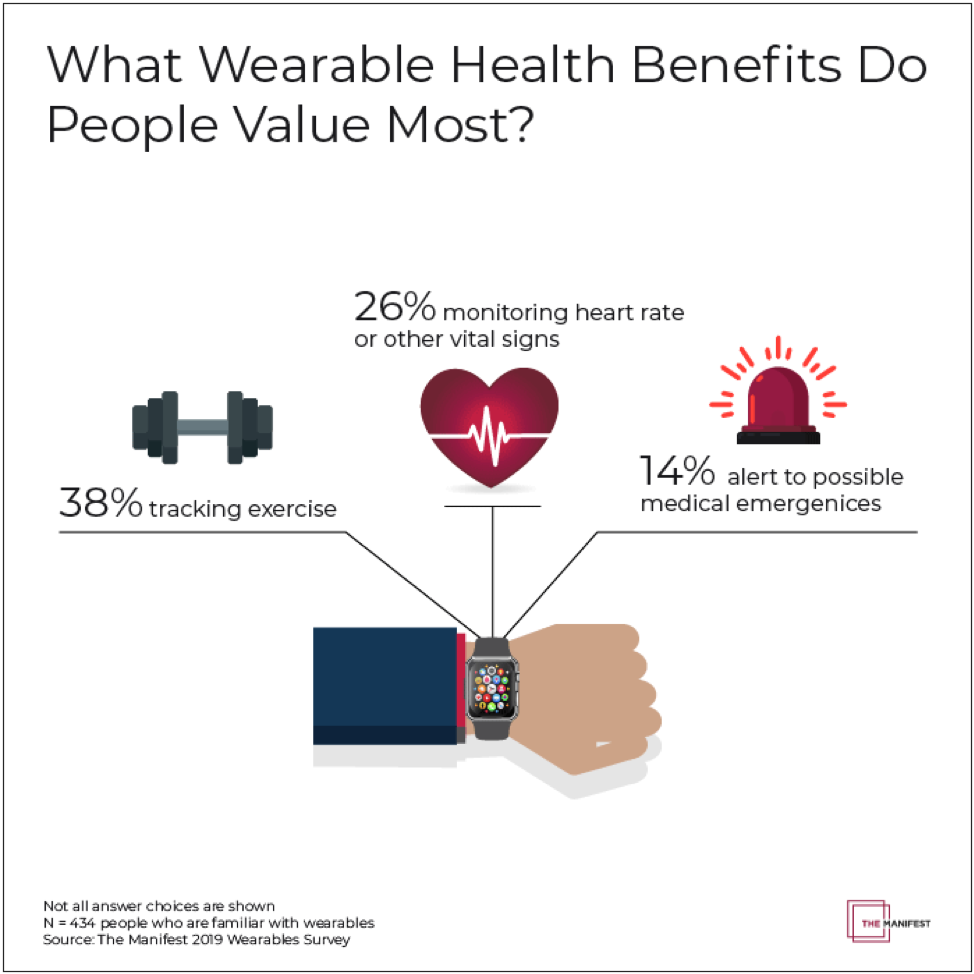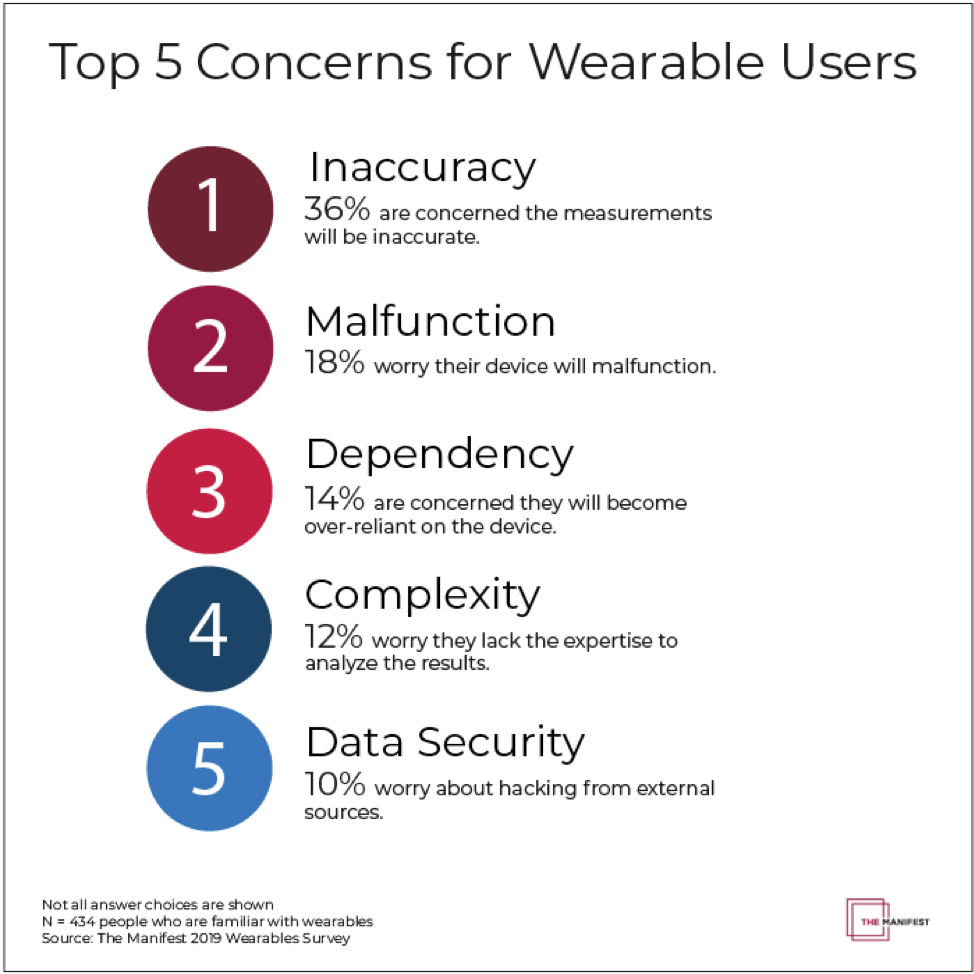Is Your Fitness Tracker Helping or Hurting Your Health?

Is Your Fitness Tracker Helping or Hurting Your Health?
Wearables’ fitness-tracking features and heart rate monitors allow users to keep closer tabs on their health. Still, more than half of people (54%) are worried about relying too heavily on a device that is susceptible to technical errors and inaccurate measurements, according to our survey.
Jeff Garmire breaks records. As a long-distance hiker, Garmire has used his Suunto watch to measure his fitness for the past two years.
The wearable helps him track his heartbeat, steps, exertion, and distance. With his smartwatch, Garmire doesn’t have to worry about overexerting himself or counting the miles it’s going to take to finish. He can just look at his wrist, know his progress, and get back to dominating the trail.
Wearables aren’t only for high-intensity athletes, though; they are becoming more mainstream as brands such as Apple and Fitbit compete for recognition among consumers.
Wearables help both athletes like Garmire and the average consumer reach their fitness goals with accessible and consistent measurements.
Fitness trackers help people monitor their heart rate, fitness, and sleep cycles and adjust their behaviors to meet their health needs.
The Manifest surveyed 581 people across the U.S. to learn how they use wearables.
We found that people primarily use wearables to track exercise and monitor their heart rate. Users are most concerned about inaccurate measurements or the device malfunctioning when they wear a smartwatch.
As wearables continue to grow in popularity, people should be wary of over-relying on a device that could have technical errors.
Our Findings
- More than one-third of people (38%) say tracking exercise is the primary health benefit of using a wearable, while 26% prioritize monitoring heart rate and other vital signs.
- Thirty-six percent of people (36%) are concerned about inaccurate measurements from their wearable, and 18% are worried about the device malfunctioning.
Wearables Help People by Tracking Their Fitness and Vital Signs
The health industry has influenced the development of wearables. People want constant access to their health information to better monitor fitness or medical issues.
More than one-third of people (38%) say the primary health benefit of owning a wearable is tracking exercise.

Meanwhile, 26% of people appreciate that they can monitor their heart rate and other vital signs simply by checking their wearable.
“I’m obsessed with the heart rate features of Apple Watch, which sends me a notification if my heart rate appears low,” said personal trainer Daniel Demoss, founder of Dumbbells Reviews, a fitness and bodybuilding equipment review site.
The Apple Watch Series 4 offers a feature and app that allows users to pick a threshold for their heart rate.
“I normally choose 50 bpm [beats per minute], and the watch sends me an alert if my heart rate falls below that number, which could mean my heart isn’t pumping blood through my body effectively,” Demoss said.
This threshold alert can be helpful for people who practice high-intensity fitness and naturally have a lower heart rate. If a person’s heart rate is too low, they may not be pumping enough oxygen-rich blood to the body, which can cause dizziness and fainting.
Wearables help people better monitor their health without needing to see a doctor frequently.
Wearables Can Hurt People’s Health With Inaccurate Measurements
Wearables can be helpful when monitoring normal heart rate and physical exercise, but people are wary of trusting their device with more complex issues.
More than one-third of people (36%) are concerned about their wearable inaccurately measuring their heart rate or exercise; 18% of people are worried that their device could malfunction.

Combined, more than half of people (54%) fear their wearable may work incorrectly.
Concerns about irregular measurements can be especially noteworthy when the wearable user doesn’t have a normal health history, such as with Joe Wilson, owner of Volare Systems, a custom software development company in Denver.
“I have atrial fibrillation (AFib), which is an occasional rapid heartbeat,” Wilson said. “The watch can detect this with the heart monitor, but it doesn’t work if the heartbeat is more than 120 beats per minute. With my AFib, that’s common, so instead of telling me I’m having AFib, it tells me my heart rate is over 120 bpm, and the results are unclear.”
It is difficult for a wearable to accurately measure irregular heartbeats or more complex health issues such as Wilson’s.
Although wearables can be a useful solution for more general health tracking, it is still important to visit a doctor for any specific medical issues.
Wearables can save money and provide valuable health data. However, they should be used as a tool to complement doctors’ visits, not as an expert source on health issues.
Wearables Help People Access Constant and Personalized Health Care
While smartwatches and fitness trackers remain the most commonly used wearable, health groups are creating new technologies to help people regulate more complex health issues.
Recent wearable health developments include:
- iTBra: Dual breast patches used as bra insert that can detect breast cancer by monitoring circadian metabolic changes in heat that correlate to breast tumors.
- Aira: Glasses with a tiny camera that helps blind and low-vision users navigate with a personalized voice guide that warns users of obstacles in front of them.
- UV Sense: A tiny wearable placed on the thumbnail for two weeks that alerts people to how much UV ray exposure throughout the day.
People can avoid unhealthy behaviors or seek treatments earlier by using wearables that can detect complicated health issues such as tumors and excessive UV rays.
Wearables Help People and Businesses Decrease Health Care Costs
Businesses recognize the potential for wearables to lower health care costs and help with overall employee well-being.
Some businesses are giving out fitness trackers to employees to improve employees’ health and decrease potential health care costs.
By investing in pre-emptive health care measures, businesses can save on insurance and health care costs.
For example, if more people are aware they are at risk for diabetes, they may eat better and exercise more frequently to prevent this illness from developing. It is much cheaper for businesses to give everyone a $100 Fitbit than pay tens of thousands of dollars in medical bills for diabetes treatments.
People may also receive more personalized insurance charges due to wearable data. For example, a wearable can detect if people are more sedentary or frequently raise their hand to their mouth, indicating a smoker. These users may have higher insurance rates than people who are highly active and don’t smoke.
Wearables provide businesses the opportunity to decrease their health care costs through pre-emptive awareness about harmful behaviors.
Wearables Increase Health Consciousness but Don’t Replace Doctors
You bought a wearable, learned how to use it, and now wear it everywhere.
How do you make sure you are getting the most from your investment? Understand your wearable’s potential and its limitations.
People realize the health benefits of owning a wearable, such as tracking their exercise or monitoring their heart rate.
Still, wearables can give inaccurate measurements or have technical issues. These issues can lead to negative consequences for people relying on their devices.
Consumers and businesses recognize wearables’ potential to decrease health care costs and offer more targeted measurements, though. With wearables’ consistent and personalized health data, doctors can get a better read on patients’ behavior and offer targeted treatments.
People should never replace their doctors’ expertise with wearables, however. Wearables can be used as a health tool but never as a definitive health solution.
About the Survey
The Manifest surveyed 581 people who are familiar with wearables and other types of IoT technology.
Sixty-four percent (64%) of respondents are female, and 36% are male. Nearly half (47%) are ages 18-34; 35% are ages 35-54; and 18% are over the age of 55.
